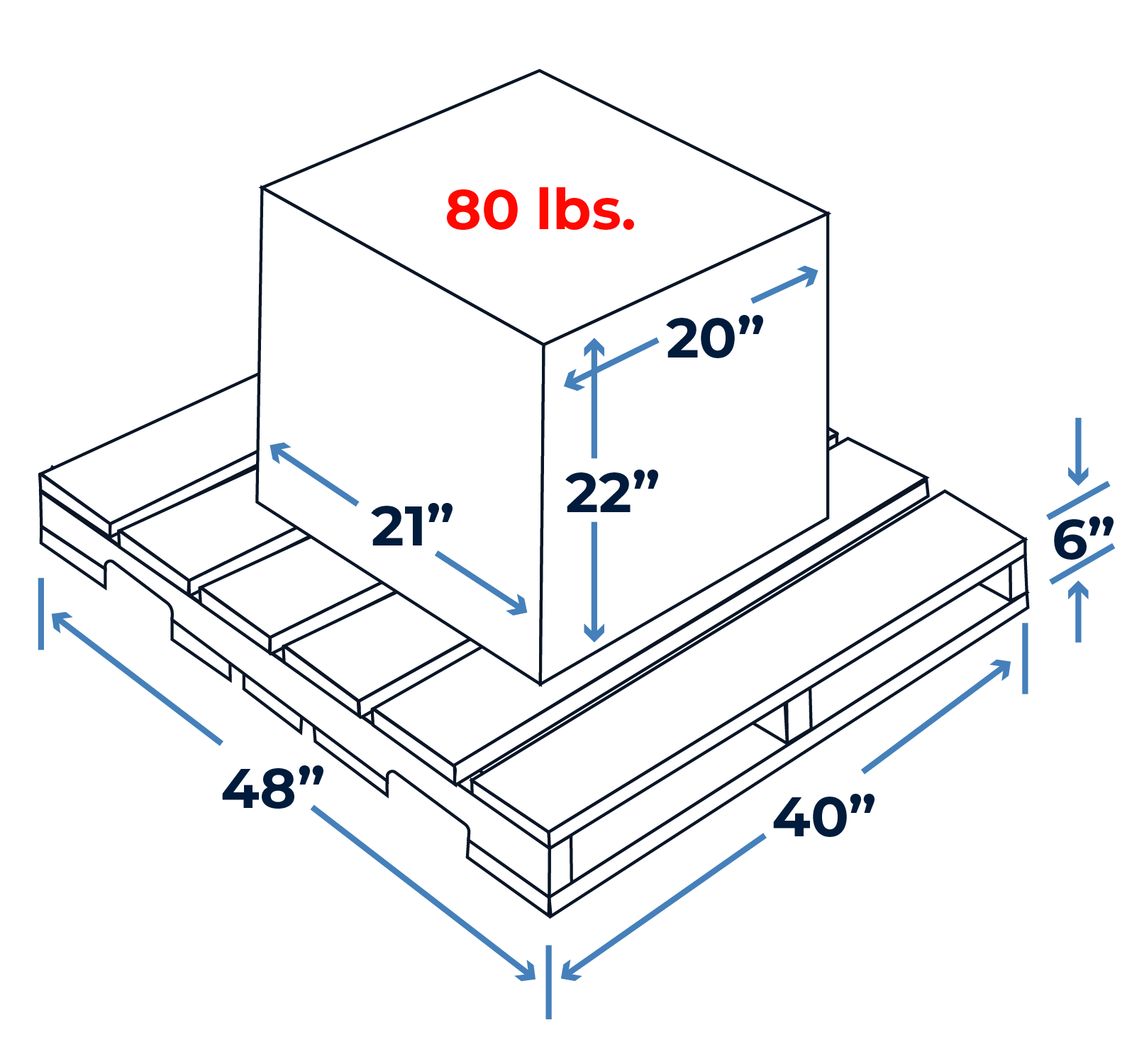FREIGHT DENSITY CALCULATOR
Shipment Density and Freight Class Table
Great news, shippers! You've found the webpage you are looking for! Add it to your favorites list for easy reference on future shipments. This shipping resource gives you the tools to determine your freight class and shipment density in pounds per cubic foot.
It even includes an example showing how we identified a shipment as class 250. If you handle a lot of freight, TLI's Transportation Management System has built-in software that can automatically populate the freight class and calculate your shipment's density.
Freight Density Calculator
Please do not use decimals or fractions. Round all numbers up to the next whole number to avoid calculation errors.
Information Concerning Freight Class
LTL shipments are rated according to NMFC® (NMFC is a regsitered trademark of the National Motor Freight Traffic Association) classification guidelines, which primarily consider the product's density, measured in pounds per cubic foot. Knowing the dimensions of your product is crucial for estimating accurate shipping rates. Use these simple freight classification tools to determine the density of your shipment, along with the freight class.
Example: Plastic Articles
Palletized Dimensions
When you palletize a shipment, the pallet's dimensions determine the cubic size. Although the original carton dimensions remain unchanged, the cubic dimensions now also include the pallet.
In the example, the density is 3.54 pounds per cubic foot (pcf). You would then compare this to the freight class calculator below.
For example, if you are shipping plastic articles with a density of 3.54 pcf, it places your shipment in sub 3 of the NMFC. Sub 3 covers densities between 2 and 4, so your NMFC code will be 156600-3, which corresponds to class 250.
Shipment Example:
- Quantity:
- One pallet
- Dimensions:
- Length: 48"
- Width: 40"
- Height: 28" (22" carton + 6" pallet)
- Weight:
- Total: 110 lbs. (80 lbs. for the carton + 30 lbs. for the pallet)
- Cubic Size:
- Cubic Inches: 53,760 (Length x Width x Height)
- Cubic Feet: 31.1 (Length x Width x Height / 1728)
- Density:
- 3.54 lbs. per cubic foot
(Total weight / Cubic feet)
Density Calculator to Help Determine Freight Class
As of July 19, 2025, the standard NMFC full-density scale has been updated to a 13 sub-class system.
Density Calculator
Shippers routing LTL freight often struggle with determining the freight class. To simplify this process, TLI offers the Density Calculator, which works dynamically within our transportation management system.
This resource page provides all the information needed to help you determine the freight class of your important shipment.

LTL Freight Class Determination
Shippers greatly benefit from TLI's density calculator for LTL shipments. This tool removes the guesswork from determining the right freight class, guaranteeing accurate classification based on density and other factors.
If you have questions, be sure to call TLI today to route your shipment properly: 610-280-3210.
Concerned about your inbound raw materials? Many shippers overpay for inbound shipments, but TLI's vendor portal program ensures that even your inbound shipments are autopopulated with the correct freight class using the NMFC Freight Class Calculator.
TLI's vendor portal program offers a substantial advantage for managing inbound shipments. Shippers often overpay due to incorrect freight class determinations on incoming materials. With the vendor portal, all inbound shipments are routed with the least cost provider, and we provide the shipper a BOL with accurate information on it. This will provide you better control over shipping costs. This comprehensive approach to managing both outbound and inbound logistics allows shippers to optimize their supply chain, reduce freight expenses, and enhance overall profitability.
Acknowledgment of NMFTA's Trademark
Whenever our educational content refers to the National Motor Freight Classification, we want readers to understand that the term NMFC is a registered trademark of the National Motor Freight Traffic Association (NMFTA). Our goal is to provide helpful industry education while also respecting the intellectual property rights of the NMFTA. Whenever we discuss topics related to freight classification, density, or commodity groupings, we recognize that NMFC identifies the official classification standard maintained and licensed by the NMFTA.
NMFTA is the owner of the National Motor Freight Classification®, more commonly known as the NMFC® (“NMFC”).


